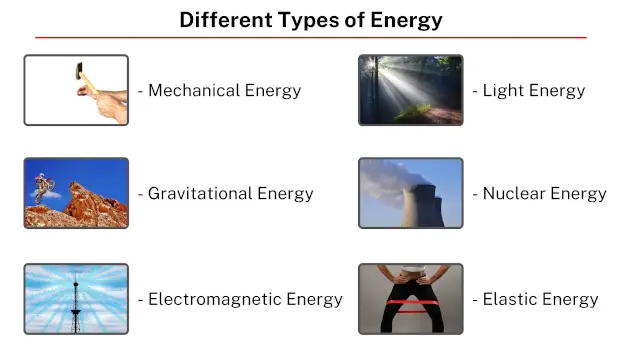
In physics, energy refers to the capacity to perform work or bring about change. It is measured in joules (J). This concept aligns with the law of conservation of energy, which states that energy cannot be created or destroyed; instead, it undergoes transformation from one form to another. For example, when a pendulum swings, potential energy converts into kinetic energy, showcasing this transformative nature.
The various forms of energy include two primary categories: kinetic energy and potential energy. Kinetic energy is the energy associated with the motion of an object, while potential energy is stored based on its position or condition. Besides these basic types, energy can be found in many other forms, such as thermal energy, chemical energy, electrical energy, geothermal energy, radiant energy, sound energy, elastic energy, gravitational energy, mechanical energy, electric potential energy, rotational energy, and photon energy.
| Types of energy | |
|---|---|
| Kinetic energy (Energy of motion) | Thermal energy |
| Electrical energy | |
| Radiant energy | |
| Sound energy | |
| Mechanical energy | |
| Rotational energy | |
| Potential energy (Stored energy) | Chemical energy |
| Geothermal energy | |
| Elastic energy | |
| Gravitational energy | |
| Electric potential energy | |
| Photon energy | |
Types
Kinetic energy

Kinetic energy refers to the energy possessed by an object due to its motion. It is defined as the work required to accelerate an object of a certain mass from rest to its current velocity. The amount of kinetic energy an object has is directly proportional to both its mass and the square of its velocity. This means that an increase in either the mass or velocity of an object will result in a corresponding increase in its kinetic energy.
Thermal energy

Thermal energy, also referred to as heat energy, is a form of energy that arises from the movement and collisions of atoms and molecules within a heated substance. The increase in thermal energy is a result of the substance’s elevated temperature, which causes its constituent particles to gain kinetic energy and exhibit more rapid motion. As the temperature rises, so does the thermal energy of the substance.
Electrical energy

Electrical energy is a form of energy that is associated with the forces acting on electrically charged particles and their movement. It is generated by the movement of electrons from one point to another, creating a flow of electric charge. This flow of charge can occur in various systems, such as electrical circuits, batteries, or generators.
Radiant energy

Radiant energy refers to the energy carried by electromagnetic waves or particles. It is a form of energy that travels through space or other mediums in the form of electromagnetic radiation. This energy includes various types of waves, such as visible light, infrared radiation, ultraviolet radiation, X-rays, and radio waves.
Sound energy

Sound energy refers to the form of energy that is produced by vibrations and transmitted through a medium in the form of sound waves. It is generated when an object or a source vibrates, causing the surrounding air molecules to compress and expand in a wave-like motion. These waves then propagate through the air or other materials, carrying the energy of the vibrations. When these sound waves reach our ears, they cause our eardrums to vibrate, allowing us to perceive the sensation of sound.
Mechanical energy

Mechanical energy refers to the sum of potential energy and kinetic energy possessed by an object or a system. Potential energy is associated with the position or configuration of an object, while kinetic energy is related to its motion. Objects possess mechanical energy when they have the ability to perform work or cause a change in their surroundings.
Rotational energy
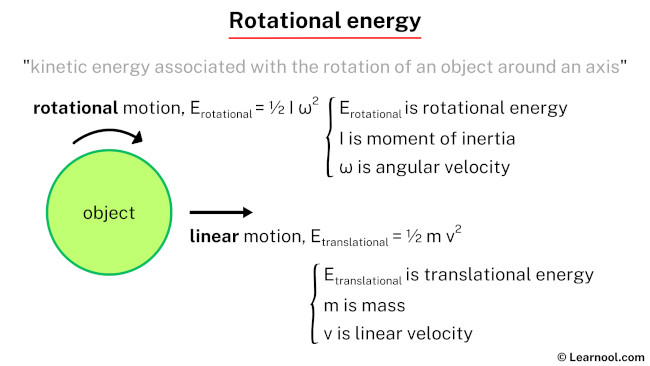
Rotational energy, a form of kinetic energy, is the energy associated with an object’s rotation around an axis. When an object, such as a spinning wheel or a rotating top, undergoes rotational motion, it gains rotational energy. This energy depends on both the mass distribution of the object and its angular velocity. In simpler terms, the faster an object rotates or the more mass is distributed farther from the axis of rotation, the greater its rotational energy.
Potential energy

Potential energy is the energy stored in an object due to its position or state. It can exist in various forms like gravitational potential energy, elastic potential energy, and chemical potential energy. For instance, when someone compresses a spring with their finger, the energy is stored in the spring as elastic potential energy, ready to be released when the spring is released.
Chemical energy

Chemical energy refers to the potential energy that resides within the chemical bonds of substances. It is stored in these bonds and can be released or absorbed during a chemical reaction. When a chemical reaction takes place, the bonds between atoms are broken, and new bonds are formed, resulting in the release or absorption of the stored energy.
Geothermal energy
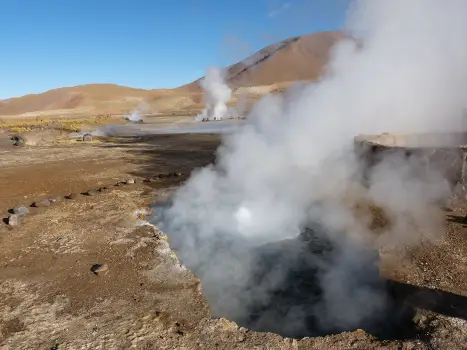
Geothermal energy is the energy extracted from the heat stored within the Earth’s core. It is obtained by tapping into the natural heat reservoirs beneath the Earth’s surface, typically through drilling wells to access geothermal reservoirs. This heat energy can be found in regions with volcanic activity, tectonic plate boundaries, or geologically active areas.
Elastic energy

Elastic energy refers to the potential energy stored in an object when it is deformed or stretched due to the application of a force. It is produced when an object undergoes elastic deformation, which means it can return to its original shape after the deforming force is removed. Objects possess elastic energy when they have the ability to store and release energy as a result of their elasticity.
Gravitational energy

Gravitational energy, also known as gravitational potential energy, refers to the energy an object possesses by virtue of its position in a gravitational field. It is directly related to the object’s height above a reference point. The higher the object is positioned, the greater its gravitational potential energy.
Electric potential energy
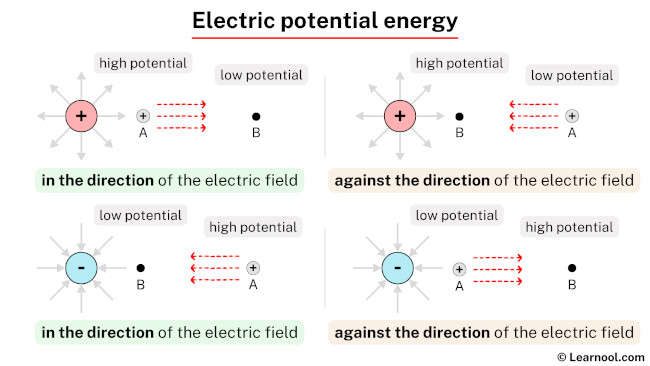
Electric potential energy is the stored energy resulting from the arrangement of charged particles within an electric field. It arises due to the interactions between these charges, with like charges repelling each other and opposite charges attracting. The potential energy of a system of charges is directly related to their positions within the electric field and can be calculated using Coulomb’s law. This energy can be converted into other forms, such as kinetic energy, when the charged particles move under the influence of the electric field.
Photon energy
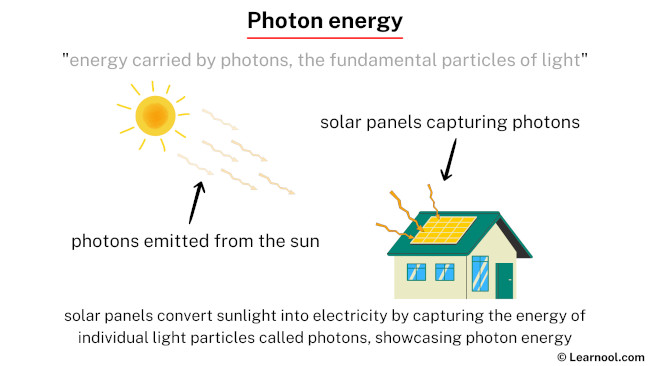
Photon energy is the energy carried by photons, the fundamental particles of light. In the world of quantum mechanics, photons exhibit both particle and wave-like properties. Whether it’s radio waves, microwaves, infrared and ultraviolet light, or the powerful X-rays and gamma rays, all these types of light are made up of photons. This illustrates how photon energy plays a role in various forms of electromagnetic radiation.
More topics
- Thermal energy
- Potential energy
- Kinetic energy
- Chemical energy
- Electrical energy
- Geothermal energy
- Radiant energy
- Sound energy
- Elastic energy
- Gravitational energy
- Mechanical energy
- Electric potential energy
- Rotational energy
- Photon energy
External links
- Energy | Definition, Types, Examples, & Facts – Britannica
- What is energy? explained – Energy Information Administration (.gov)
- Energy – Wikipedia
- ENERGY Definition & Usage Examples – Dictionary.com
- Physics of Energy | Canada Science and Technology Museum – Ingenium Canada
- What are energy and work? (article) – Khan Academy
- What is energy? – Cosmos Magazine
- What Is Energy? Where did it come from? – Physics Stack Exchange
- Ch. 7 Introduction to Work, Energy, and Energy Resources – OpenStax
- Work, Energy, and Power – The Physics Classroom
- The history of the concept of energy and work – IOP Spark
- Energy: An Introduction – Visionlearning
- Energy – The Physics Hypertextbook
- Energy – Physics LibreTexts
- Energy – APlusPhysics
- Energy Definition and Examples – ThoughtCo
- Energy Physics: Definition, Stores & Transfer – Vaia
- Forms of energy – Energy Information Administration (.gov)
- What is Energy? A Definition and Controversy – Physics Forums
- What is Energy? – Weber State University
- Types of Energy – Knowledge Bank – Solar Schools
- Types of energy (article) – Khan Academy
- Sources and Types of Energy – Alliant Energy Kids
- 10 Types of Energy and Examples – ThoughtCo
- Unit 1: What is Energy? – University of Wisconsin-Stevens Point
- Forms of Energy – FAMU-FSU College of Engineering
- Types of Energy – Young People’s Trust For the Environment
- 8.1: Types of Energy – Chemistry LibreTexts
- What Are the Main Types of Energy? – Quick Electricity
- Clause / Types of Energy – Orleans/Niagara BOCES
- Energy | Definition, Types & Forms – Video & Lesson Transcript – Study.com
- Different Types Of Energy – DK Find Out!
- Different Types of Energy With Everyday Examples – YourDictionary
- Energy forms – BBC
- 17.2 Forms of Energy – CK-12 Foundation
- 10 Types of Energy and Examples – Science Notes and Projects
Deep
Learnool.com was founded by Deep Rana, who is a mechanical engineer by profession and a blogger by passion. He has a good conceptual knowledge on different educational topics and he provides the same on this website. He loves to learn something new everyday and believes that the best utilization of free time is developing a new skill.
